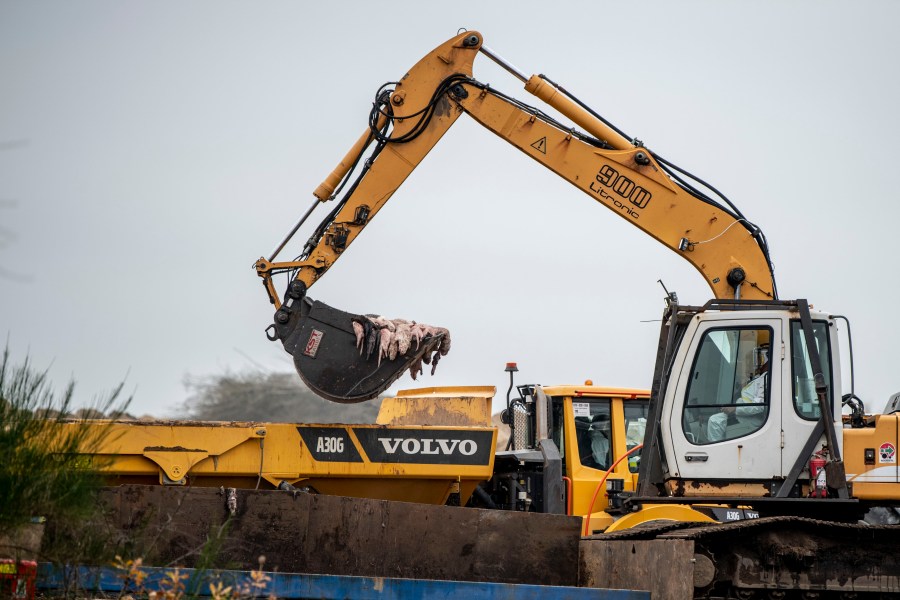PORTLAND, Ore. (KOIN) — A mink caught outside of a farm under quarantine for a recent coronavirus outbreak tested positive for the virus. It is believed to have escaped from confinement at the farm, officials said.
The Oregon Department of Agriculture said among animals captured during wildlife surveillance near a mink farm that recently had a SARS-CoV-2 outbreak, a mink believed to have recently escaped confinement tested positive for low levels of the virus known to cause COVID-19 in humans.
ODA released a statement Wednesday saying recent tests confirm mink at the farm that tested positive for the virus in late November are now clear of the virus. The department conducted two rounds of follow-up tests, 14 days apart, to document the animals’ recovery. The first follow-up testing occurred on Dec. 7 with only one of the 62 tested animals testing positive for barely detectable levels of the virus. With the second round of testing on Dec. 21, there were no signs of the virus among all 62 tested, indicating the mink population on the farm had recovered, ODA said. One more round of testing will be conducted prior to releasing the quarantine, per U.S. Department of Agriculture and Centers for Disease Control Guidance.

Scientists with USDA Wildlife Services, under the direction of the Oregon Department of Fish and Wildlife, are continuing to conduct wildlife surveillance near the farm, which entails trapping and testing animals. Nine animals have been captured and tested by biologists since Dec. 7, ODA said. Of those, five wild opossums and three cats tested negative for the virus, but one mink believed to have escaped the quarantine facility tested positive.
On Tuesday, The USDA National Veterinary Services Laboratory (NVSL) confirmed the trapped mink, which was captured on Dec. 13, tested positive for low levels of SARS-CoV-2. USDA Wildlife Services and ODFW believe the captured mink had very recently escaped confinement based on the condition of the animal, necropsy findings and the location of capture. As a precaution, ODA is requesting continued surveillance, trapping and testing.
“There is no evidence that SARS-CoV-2 is circulating or has been established in the wild,” said Dr. Ryan Scholz, ODA state veterinarian. “Several animals from different species were sampled, and all others were negative. Still, we are taking this situation very seriously and continuing to survey and trap near the farm. Also, we have asked USDA to run additional tests on the trapped mink, including sequencing the viral genome and a DNA test to ensure we know exactly where this mink came from.”
The Arizona-based conservation group, Center for Biological Diversity, released a statement about the development:
“It’s beyond outrageous that an infected mink can escape even from a quarantined fur farm, putting a untold range of wild animals at risk of contracting the virus,” said Lori Ann Burd, environmental health director at the CBD. “As much as I hope this case of COVID-19 is just limited to the one mink they tested in the wild, we know this virus is highly contagious and that one case quickly grows to many. It breaks my heart to think about how COVID-19 could tear through wild animal populations. Fur farms pose a massive threat to public health and our amazing wildlife and we need our regulators to quit pretending they have everything under control when nothing could be further from the truth. It’s hardly reassuring when the only mink you’ve tested in the wild tests positive. It’s horrifying.”

In late November, officials confirmed the first cases of the virus in mink at a fur farm in Oregon, after which the farm was immediately placed under quarantine, meaning no animal or animal product can leave the farm until further notice.
Authorities have not identified the location of the farm, which is one of only seven active mink farms in Oregon.
The mink are believed to have contracted the virus from humans, officials said. It being a small facility, disclosing any individually identifiable information could reasonably result in disclosure to an individual’s medical information, such as their COVID-19 status, which ODA said they consider personal information that should not be made public.
In Utah, a wild mink living in the area of an infected farm was identified as testing positive for SARS-CoV-2 last week, officials said.
Denmark plans to kill all of its roughly 17 million mink over worries over a mutated form of coronavirus that can spread to humans that was found on mink farms.
U.S. authorities say the risk of the virus jumping from mink to humans is low and almost negligible when properly managed.
